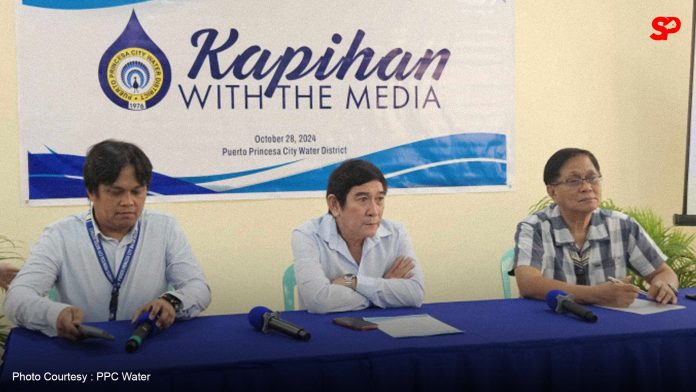By Matthew Go
The Puerto Princesa City Water District (PPCWD) will hold a public forum on November 14 to discuss a proposed ₱2.50 per cubic meter increase in water rates. The adjustment, aimed at addressing rising electricity costs for water processing and distribution, awaits approval from the Local Water Utilities Administration (LWUA).
PPCWD General Manager Walter Laurel announced the proposal during an October 28 press briefing. He explained that the rate adjustment was necessary due to increased electricity rates from PALECO and rising diesel costs impacting the budget for water treatment plants, pumps, and disinfection facilities.
Laurel noted that PPCWD delayed billing adjustments related to power cost increases until now. The agency’s five-year report indicated a rise in annual electricity expenses from approximately ₱3-5 million to ₱10 million.
The power cost adjustment would support PPCWD’s expansion projects and encourage water conservation among consumers. The average monthly household consumption in Puerto Princesa is 21 cubic meters. With the proposed adjustment, an average household would see an increase of about ₱50 in their monthly bill.
The PPCWD board, which approved the adjustment, initially calculated the cost at ₱4 per cubic meter but lowered it to ₱2.50 to mitigate the impact on consumers. If approved, the rate increase would take effect in January 2025.
The proposed adjustment applies uniformly, with no compounding for commercial rates, meaning businesses consuming higher volumes would pay the same rate increase per cubic meter. Laurel emphasized that without the adjustment, future growth and water availability could be compromised.
Assistant General Manager for Admin and Finance Ronnie Fernandez highlighted similar adjustments in other water districts, citing Metro Cebu Water District’s purchase water adjustment as an example.
As of August 2024, PPCWD has 55, 981 active service connections, with 3, 673 more expected from Barangays Bacungan, Mangingisda, and Kamuning by year-end. PPCWD aims to connect all 66 barangays in Puerto Princesa, though some rural areas operate at a financial loss due to high pipeline service costs. Earnings from urban barangays currently subsidize service in 16 rural barangays.

